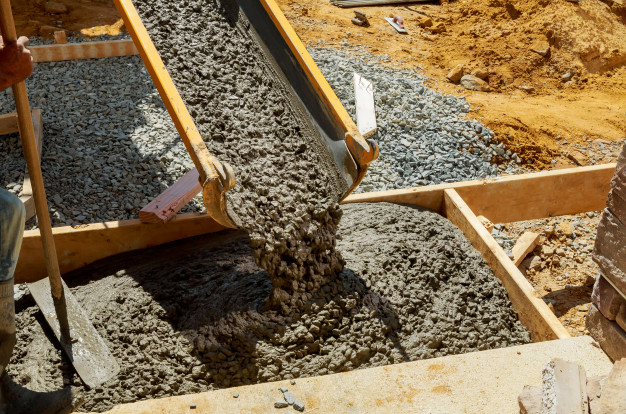The concrete mixture consists of several components that are mounted together, containing fine cement, water, sand, small crushed stones (pebble), and natural gravel. Around the iron pillars for construction, they are used to fill some voids in the construction, while the other type is reinforced concrete, to which rebar is added, increasing its durability and strength and remaining for some time without being affected or eroded. The concrete components are mixed according to the work to be performed, and they are mixed and shaken together, to form a pourable cementitious concrete that begins to harden over time through a chemical reaction that occurs between the concrete components called (Hydration). for processing.
Concrete mixture ingredients
Cement is a fine, dark-colored powdery powder consisting of raw components (silica, calcium carbonate, and alumina). Cement absorbs water at a high speed and works on the assembly and bonding of concrete components together, and its cohesion increases by adding reinforced iron, and there are several types of it such as Portland cement. Natural, fast-hardening type, and low-temperature type. There are also types of cement that resist sulfates and salts, and many other types, and no matter how many types of cement, it must undergo several tests to ensure its quality and durability, so it is chemically analyzed.
Aggregate is called gravel, broken rocks, some of which are in the form of granules, and some are larger. The aggregate enhances the concrete mixture’s strength and makes it resistant to various weather factors. It results in expansion and contraction, so it becomes strong to resist moisture and drought, and like other components of the mixture, the mixture must undergo several tests to ensure that the aggregate is free of impurities and clay, and is not degradable with the change of various weather factors, and resists the factors of erosion, erosion, and corrosion. The components of the aggregates must also be not large and take a spherical shape, and their water absorption rate must be checked, as it does not exceed 5%, and the aggregates must be washed before adding to the other components of the concrete mix to ensure that it is free of salts, impurities, and organic components.
Water is the life of the concrete mixture, and it is necessary to mix the components and obtain a cement paste suitable for work. It is the basis of the chemical reaction between its components. It is absorbed by cement granules and grit, provides concrete with ductility, and makes it formable and pourable. Water is added in specific proportions, and after the concrete is poured and formed, the water gives the concrete a double volume of 15%, and the remaining part is lost by evaporation, and it is important to water the concrete with water after pouring and drying it completely to increase its strength.
Source: wikipedia.org/wiki/Reinforced_concreteRead More: buildineg.com/public/blog/what-is-a-concrete-jacketing-of-column/

